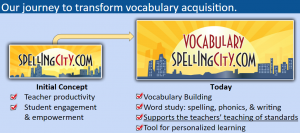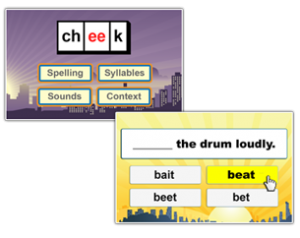It's no secret. Reading comprehension around the country continues to be a problem. A big problem. It's a big problem in elementary schools and it only gets worse from there. Our students are not making the progress that they should and part of the answer to me seems to be simple.
The fact is that if the kids don't understand enough of the words that they are reading, they can't comprehend the text. They just can't. Where I get impatient is that so many school systems, teachers, bloggers and social media people seem to keep repeating that the kids should learn to use context clues and word attack strategies based word roots and affixes. And they say it as if only the kids would read more, they'd pick up the vocabulary that they need.
The problem with these ideas is that it has either been proven to be untrue or at least, has not been proven to work. Yet they keep repeating it as if it's the solution to the problem. It's not. Lets look at it point by point.
There are a lot of words that students need to learn. Beck organizes them into Tier I, II, and III. There's also strategically important academic vocabulary and content vocabulary. As far as I can tell, nobody has ever quantified what percent of the Tier I & II words can be accessed through word roots and affixes. I believe it's a tiny percent, less than 15%. Probably less than 5%. And in fact, in a good percentage of the words, the apparent word root is more misleading than illuminating. Yet, we keep promoting these word attack strategies as if they are going to move mountains. They are not, they are side shows to the core problem of learning thousands of words, thousands of words per year! These tactics are not magic keys to building vocabulary.
Does reading enough help students master the vocabulary that they need? Empirically, this has been shown to be false. NOT TRUE, Also, basic common sense suggests that it's not true too. Research (and most people's experience) has shown that a few encounters to a word does not lead to proficiency or mastery of it. The research says that students, to learn and retain a word must:
- Encountere it 12 to 14 times
- Encounter in a variety of modalities meaning the word must be heard, read, spoken, written, and played with. Seeing it while reading is just one modality and the least likely one to lead to retention.
- Encountered over a spaced period of 4-5 weeks
We all know that students can cram for a test on a Friday, get 100% on the meaning of the words, and know practically none of these words a week later. Cramming and random encounters with words are not a vocabulary building strategy, they are just wishful thinking but way too many schools base their vocabulary program on this type of wishful thinking.
Basic stats: The National Research Council said that 70% of our comprehension problem is a vocabulary problem. Not 7%, but 70%. They were looking specifically at elementary schools (actually fourth grade).
Schools talk about how students need to build reading endurance which makes me crazy angry. There's no point making students struggle through long passages if they kids aren't getting anything from the exercise. And while the kids today do seem to have strong proficiency at decoding, they are not understanding very much primarily because they don't hit the minimum threshold of vocabulary knowledge or automaticity required to decipher the rest. (Some background sources: Professor Tim Rasinski on Automaticity and McREL's Research Paper on Vocabulary Building).
Here's where I get crazy annoyed. The teachers and curriculum are actually doing a solid job of introducing and teaching new vocabulary to students. I see this in classroom after classroom. But they introduce and teach each week and then they move onto the next lesson the next week and they don't have the time, tools, or training to translate their teaching into retention. Vocabulary retention requires strategic spaced practice over a number of weeks.
VocabularySpellingCity has as its mission, the creation and dissemination of a system so that students retain a far larger percentage of the vocabulary words that they are being taught. Join us now on this vocabulary matters journey!

